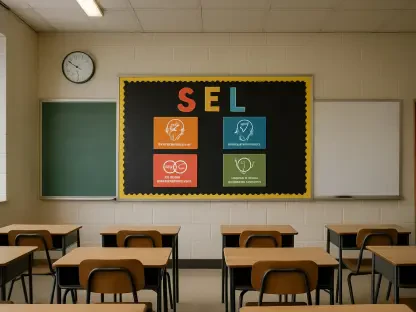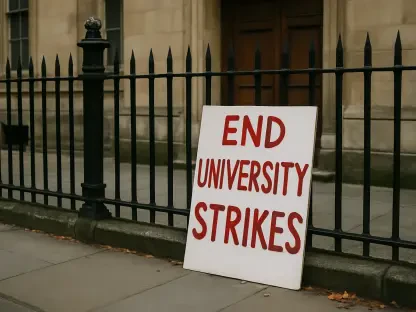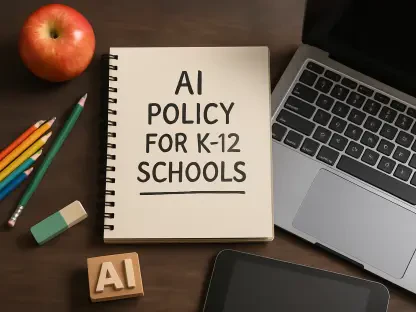The recent decision by the Trump administration to suspend nearly $7 billion in federal education financing has sparked significant concerns, primarily for public schools already struggling with limited resources. This funding freeze presents a considerable challenge, particularly for programs serving disadvantaged student populations. By holding back essential funds meant for various educational programs, including those aimed at teacher development and support for English learners, the ripple effects throughout the school system are enormous. It compels stakeholders to consider the wide-ranging implications of this decision for the future of public education in the United States.
Adverse Effects on Specific Educational Programs
Title II, III, and IV Funding at Stake
The heart of the issue lies in the specific allocation of funds that have been frozen, which amounts to $468,151 according to fiscal year 2025 figures. This freeze affects Title II funding, crucial for recruiting, training, and retaining educators who play a pivotal role in maintaining school quality. Without these funds, school districts face a significant hurdle in ensuring their teaching staff is well-prepared and supported. Title III funding, which provides language instruction for English learners, is equally essential, as it addresses the needs of a growing demographic within the education system. The withholding of this support jeopardizes the language development and educational attainment of numerous students.
Title IV funding is also on the chopping block; it is designed to enhance learning environments, promote technology use in the classroom, and generally ensure student success. By cutting short these resources, schools may struggle to maintain conducive learning conditions and keep pace with technological advancements integral to modern education. This comprehensive funding freeze illustrates a systemic challenge, pushing many schools toward a precarious future where they might not meet their educational objectives.
Criticisms and Concerns
Kelly Jones, a former school board president, has been vocal about the adverse effects of this funding decision, emphasizing that it leaves districts unprepared to manage potential shortfalls. Her criticism highlights a broader concern that the federal government’s action reflects a diminishing understanding of children’s and educators’ needs, particularly during critical times when additional support is necessary. The freeze exacerbates existing pressures, particularly on students from working-class backgrounds, who already experience the impacts of cuts in welfare services like food assistance and healthcare.
By undermining programs that are critical for the education and well-being of disadvantaged students, the federal government risks deepening existing inequities. The broader trend of diminishing support points to an agenda that may favor private education initiatives over the public system. This scenario jeopardizes the futures of those who rely heavily on public education, which has long served as a cornerstone for equal opportunity.
Broader Implications for Public Education
Dismantling Public Support Structures
The decision to freeze education funding underlines a troubling movement toward eroding structures that ensure equitable access to education. Critics, such as Jones, argue that weakening the Department of Education’s role in supporting students is detrimental to maintaining a fair education system. This erosion threatens the federal support systems that many students, particularly from minority and underrepresented communities, depend on for success. By restricting access to necessary resources, the funding freeze creates concerning educational disparities, directly impacting the most vulnerable populations.
The notion of strengthening privatized education through the neglect of public schooling raises alarms about the long-term consequences for socio-economic mobility. If the trend persists, public education could suffer severely, leaving those without the means to seek alternatives stranded in an increasingly unequal system. Many argue that robust public education is foundational to a thriving society, making any undermining efforts questionable and counterproductive.
Realities vs. Policies
The disconnect between federal policies and realities experienced within school districts is increasingly evident. Jeanice Swift, in her report, emphasized the urgency of recognizing the immediate impact of such funding decisions, challenging the euphemistic language that refers to the freeze as merely a “pause.” Schools face tangible crises that cannot wait for deferred funding resolutions, and while policy may dictate one course, the practical implications on the ground tell a different story.
This situation echoes broader sentiments within many public and educational institutions, where high-level decisions often fail to consider the lived experiences of those they are meant to serve. The prioritization of individualism and privatization over collective public schooling magnifies the divide between policy intentions and actual community needs. Consequently, the uneven application of federal support creates pervasive challenges that ripple through every layer of the educational ecosystem.
Local Efforts to Mitigate the Impact
Taking Local Action
Despite the hurdles posed by the federal funding freeze, school boards continue to demonstrate determination and resilience. At the recent board meeting, discussions extended beyond the immediate funding concerns to include various operational decisions that reflect the board’s broader responsibilities. Electing new officers, approving construction projects, enhancing communication systems, and upgrading technological infrastructure exemplify the dual approach of addressing pressing needs while planning for the future.
This proactive stance showcases the commitment to improving school infrastructure and ensuring that educational support systems remain stable. Even as schools grapple with challenges presented by federal funding modifications, the consistent dedication to their core mission illustrates the board’s resolve. These local efforts, though crucial, also highlight the pressing need for a stable and supportive federal partnership to complement local initiatives.
Commitment to Education Quality
By prioritizing technology and communication advancements, school boards convey a message of unyielding dedication to educational excellence. They focus on resource management, effective stakeholder engagement, and facilitating operational efficiency at every level. Even amid obstacles related to funding and policy shifts, a steadfast commitment to fostering an environment conducive to learning remains paramount.
These actions signal the board’s determination to enhance operational effectiveness while prioritizing educational quality, striving to overcome federal funding barriers through strategic local means. Though federal support may falter, the unwavering focus on students’ needs serves as a testament to their dedication. While the funding freeze poses significant challenges, it also reveals the resilient spirit inherent in public education systems, resolved to overcome hurdles in pursuit of excellence.
Looking Forward: Navigating Funding Challenges
The Trump administration’s recent choice to suspend nearly $7 billion in federal education funding has raised significant concerns, especially for public schools barely getting by due to limited resources. This funding freeze hits hardest on programs designed to assist disadvantaged student groups. The decision to withhold critical funds intended for various educational initiatives, including those aimed at teacher development and support for English language learners, has far-reaching consequences throughout the educational system. It forces educators, administrators, policymakers, and other stakeholders to evaluate the broad implications this decision might have on the future landscape of public education in the United States. Many worry about how schools will continue to serve all students effectively, especially those most vulnerable, amid such financial constraints. The decision has also sparked a broader debate about how public education should be funded and the federal government’s role in ensuring equal educational opportunities for all students.









